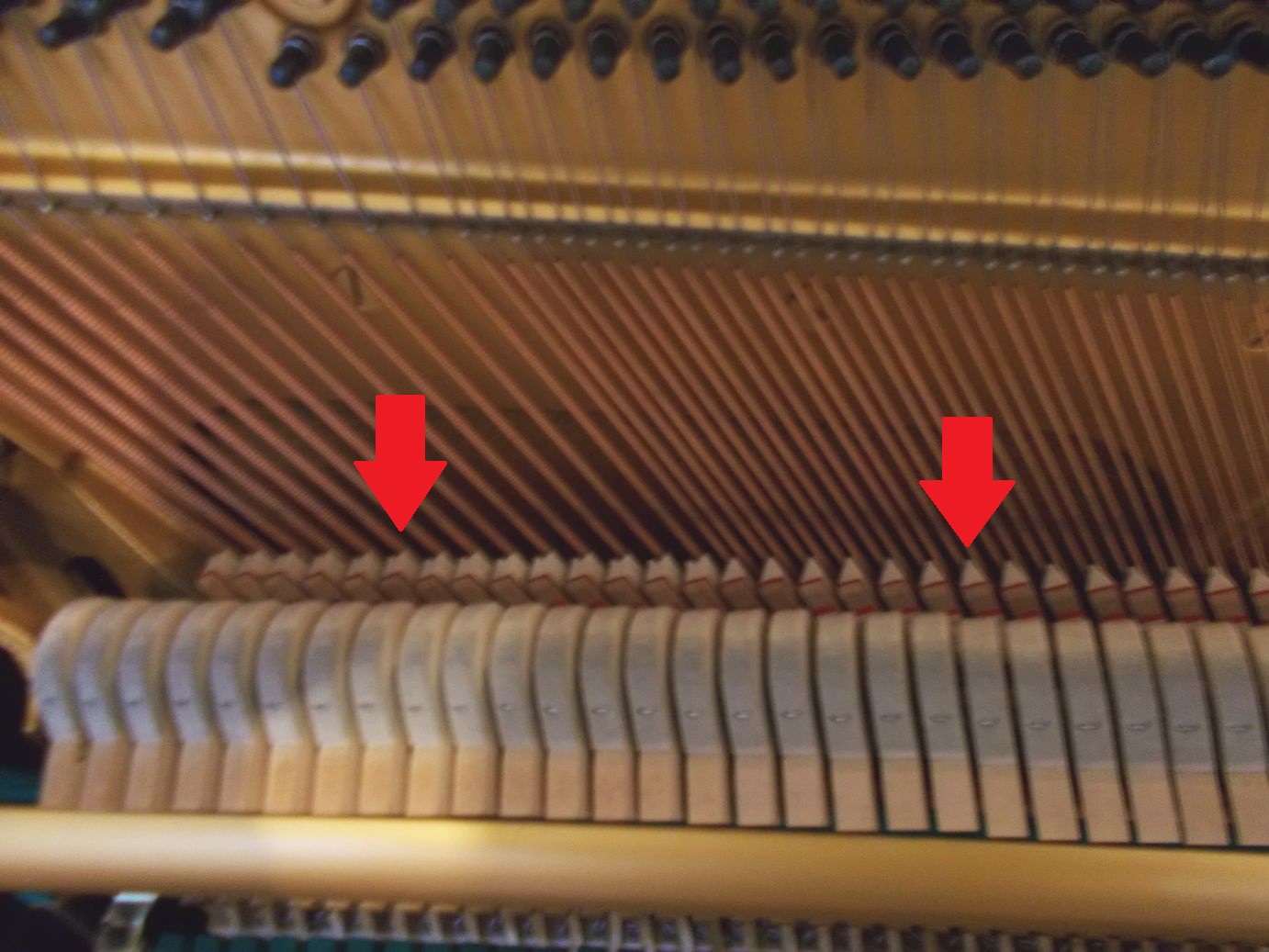Using WD40 on piano pedals is not recommended as it can damage the instrument. Opt for a lubricant specifically designed for pianos instead.
A piano is a sophisticated instrument with delicate internal mechanisms, requiring proper maintenance to ensure optimal performance. Piano pedals, the levers at your feet that alter the instrument’s sound in various ways, may occasionally become squeaky or less responsive. Addressing this issue with care is crucial as using the wrong products can lead to long-term damage.
Those looking to maintain their piano should avoid household lubricants like WD40 which can degrade the felt and other materials inside the piano. For a responsive and well-maintained pedal mechanism, it’s best to consult a professional piano technician who can recommend appropriate lubricants and provide regular, specialized care that keeps your instrument in concert-ready condition.
The Role Of Piano Pedals
The Role of Piano Pedals is pivotal in creating the rich tapestry of sound we associate with piano music. These pedals, located at the base of any piano, bring depth and emotion, allowing the artist to convey their musical message. Each pedal has a unique function that transforms the notes played on the keyboard. Let’s delve into their individual roles and understand why a substance like WD40 might not be the best idea for their maintenance.
Shifting Sounds: Sustain And Soft Pedals
The sustain pedal, found on the right, is also known as the damper pedal. It prolongs the sound of the notes, giving a sense of continuity. The soft pedal, or the una corda, located on the left, reduces the volume. It creates a softer, more mellow sound. These pedals are essential for:
- Adding emotion to a piece
- Creating dynamic contrast within music
- Allowing notes to resonate freely
Care and maintenance of these pedals are crucial. WD40 is not typically recommended as it can accumulate dust and lead to further issues.
Enhancing Harmonics: The Sostenuto Pedal
The sostenuto pedal is the middle child of piano pedals, often found on grand pianos. It selectively sustains certain notes, enhancing the harmonic complexity. This pedal helps pianists:
- Hold certain notes while playing others unaffectedly
- Enrich the musical texture
- Control the harmonic layers in a composition
Like the other pedals, the sostenuto requires regular maintenance. Consider using products designed specifically for piano care rather than all-purpose lubricants like WD40.

Credit: www.amazon.com
Common Pedal Issues
Piano pedals are vital for dynamic playing. They can face issues like sticking or noise. Proper maintenance is key. Here we’ll explore common problems and whether WD40 is a suitable fix.
Sticking Problems
Sticky pedals disrupt smooth playing. Dust and grime build-up is often the culprit. Routine cleaning helps prevent this issue. In severe cases, professional servicing might be necessary.
- Check for visible blockages
- Clean regularly with a dry cloth
- Avoid using household oils
Squeaky And Noisy Pedals
When pedals squeak, they need attention. It’s a sign of friction or a need for lubrication. Care must be taken with the choice of product.
| Issue | Cause | Potential Solution |
|---|---|---|
| Squeaks | Worn felt, misplaced action | Professional adjustment |
| Noises | Loose parts, deformed pedals | Tightening or part replacement |
WD40 is not recommended for pianos. It can damage finer mechanisms. Opt for specialty lubricants designed for pianos, or consult a technician.
Wd40: A General Overview
The name WD40 often brings to mind a can of that all-familiar spray. It’s known for fixing squeaky hinges and rusted bolts. Yet, its use in sensitive instruments like pianos raises eyebrows. Let’s dive into what WD40 is and why its use is a topic of discussion.
WD40 isn’t your ordinary oil; it’s a blend of unique ingredients. Developed in the 1950s, it was designed to repel water and prevent corrosion. Not just oil, it contains anti-corrosion agents and ingredients for penetration, water displacement, and lubrication. It’s widely used for:
- Loosening rusty parts: bolts, screws, and hinges
- Protecting metal from rust: tools, engines, and machines
- Displacing moisture: electrical systems, spark plugs, and engines
- Cleaning: grease, grime, and other adhesives
But WD40 isn’t the solution for everything. Sensitive mechanisms, particularly in musical instruments like pianos, often need specific care. A piano pedal, for example, relies on precise action and smooth operation. The complex inner workings of piano pedals mean they require lubricants that are:
- Non-greasy: to avoid attracting dust and grime
- Stable: to not dry out or get stickier over time
- Specific for pianos: as they’re designed not to harm the delicate parts
WD40 can attract dirt and may even dissolve the grease that’s necessary for proper pedal function. Professional piano technicians often warn against its use on piano pedals to avoid potential damage. It is always better to opt for specific piano lubricants recommended by professionals for such tasks.

Credit: www.reddit.com
Maintaining Piano Pedals
Maintaining the pedals of your piano is critical to ensuring smooth and responsive play. Over time, dust, dirt, and other contaminants can cause friction and noise in the pedal mechanism. Proper cleaning and lubrication keep pedals functioning at their best. But caution is needed when choosing products to use.
The Right Lubricants
Not all lubricants are suitable for piano pedals. WD40 might be a known quick fix for squeaky hinges, but it’s not recommended for piano pedals. It can actually damage the delicate mechanism inside. Opt for products specifically designed for pianos. High-quality lubricants provide long-lasting protection without harming internal components.
- Use piano-specialized lubricants.
- Avoid household oils and sprays like WD40.
- Consult a professional for the best product.
Regular Maintenance Tips
Keeping piano pedals in top condition doesn’t end with the right lubricant. Follow these simple steps for optimal maintenance:
- Inspect your piano pedals frequently.
- Clean around the pedals to remove any buildup.
- Schedule routine professional maintenance.
Remember, frequent care prevents major repairs. Stay consistent with these practices, and enjoy seamless performances every time you play your piano.
Wd40 On Piano Pedals: Pros And Cons
Many piano owners face the challenge of dealing with squeaky or stuck pedals. WD40 seems like a handy solution, but does it really work on piano pedals without causing damage? This section dives into the short-term benefits and possible long-term harms of using WD40 on your piano pedals.
Temporary Fixes Vs. Long-term Harm
Applying WD40 offers a quick, easy fix for noisy piano pedals. It reduces friction and quiets down those annoying squeaks swiftly. Nevertheless, it’s crucial to understand the components of WD40. It’s primarily a solvent with water-displacing properties, not a lubricant designed for delicate mechanisms like a piano’s interior.
- Pros:
- Instant noise reduction
- Ease of application
- Readily available
- Cons:
- Potential harm to piano’s felt and leather
- Risks attracting dirt and dust
- Could lead to more extensive repairs
Expert Opinions And Recommendations
Piano technicians and experts often advise against WD40. They suggest products specifically designed for pianos. These specialized lubricants keep pedals moving smoothly without harmful effects.
| Alternatives to WD40 | |
|---|---|
| Recommended Products | Benefits |
| Piano-specific lubricants | Safe for all piano parts |
| Graphite powder | Long-lasting, no residue |
| Protech Spray | Designed for musical instruments |
Consulting a professional is crucial before making a decision. They carry the right tools and experience to recommend the best course of action. This ensures your piano receives the care it needs while preserving its longevity and playability.

Credit: pianotuninginyork.blogspot.com
Alternatives To Wd40
Seeking an alternative to WD40 for your squeaky piano pedals? You’ve got options that can keep the music flowing smoothly.
Specialized Piano Lubricants
Never underestimate the power of a good piano lubricant. These special formulas work wonders on pedal mechanisms:
- Piano-specific lubricants: Designed to protect and maintain piano parts without harming them.
- High-quality silicone sprays: These provide long-lasting lubrication.
- Teflon-based products: Excellent for reducing friction on metal components.
Lubricants like these ensure your pedals move freely without attracting dirt or dust.
Home Remedies
Want to solve pedal issues with items from around the house? Here are some quick fixes:
- Furniture polish: A dab can help ease pedal movement.
- Sewing machine oil: It’s light and won’t gum up the works.
- Graphite powder: Great for metal-to-metal contact areas.
Remember, a little goes a long way, and precision is key!
Can Wd40 Damage Piano Pedals and How Can I Care for Them Properly?
Using the best headphones for piano can help prolong the life of your piano pedals. Avoid using WD40 on the pedals, as it can potentially damage the internal mechanism. Instead, regularly clean and lubricate the pedals with a dry cloth and piano pedal lubricant to maintain their proper function and prevent any potential damage.
Frequently Asked Questions Of Can You Use Wd40 On Piano Pedals
How Do You Lubricate Piano Pedals?
To lubricate piano pedals, remove the bottom board, apply a high-quality lubricant like Teflon or silicone spray to the pedal rods, and replace the board. Always use a minimal amount of lubricant and avoid getting it on surrounding parts.
How Do You Clean Piano Pedals?
Begin by gently dusting piano pedals with a soft cloth to remove surface dirt. Then, lightly dampen a cloth with water or mild soap solution, and carefully clean the pedals. Finally, dry them with a clean, dry cloth to prevent rust or damage.
What Is The Best Polish For Piano Pedals?
The best polish for piano pedals is a high-quality metal polish designed for brass or chrome, depending on pedal material, such as Wright’s Brass Polish or Autosol Metal Polish. Always apply gently with a soft cloth.
How Do I Protect My Piano Pedals?
Use felt pedal covers to minimize scratches and wear. Regularly clean pedals with a dry cloth to prevent dust buildup. Avoid using harsh chemicals that can damage the pedal’s finish. Also, ensure proper foot technique to reduce excessive force on pedals.
Keep liquids away to prevent corrosion.
Conclusion
Wrapping up, it’s clear that WD40 should not be your go-to for piano pedal maintenance. Choose products designed specifically for pianos to avoid damage. Regular care with appropriate lubricants will ensure your instrument performs beautifully for years. Remember, the key to harmony isn’t just in the music, but in the maintenance too.
